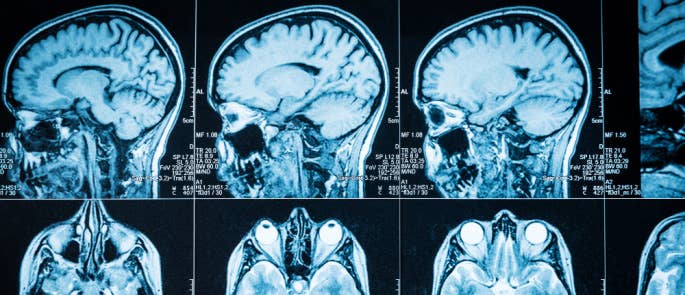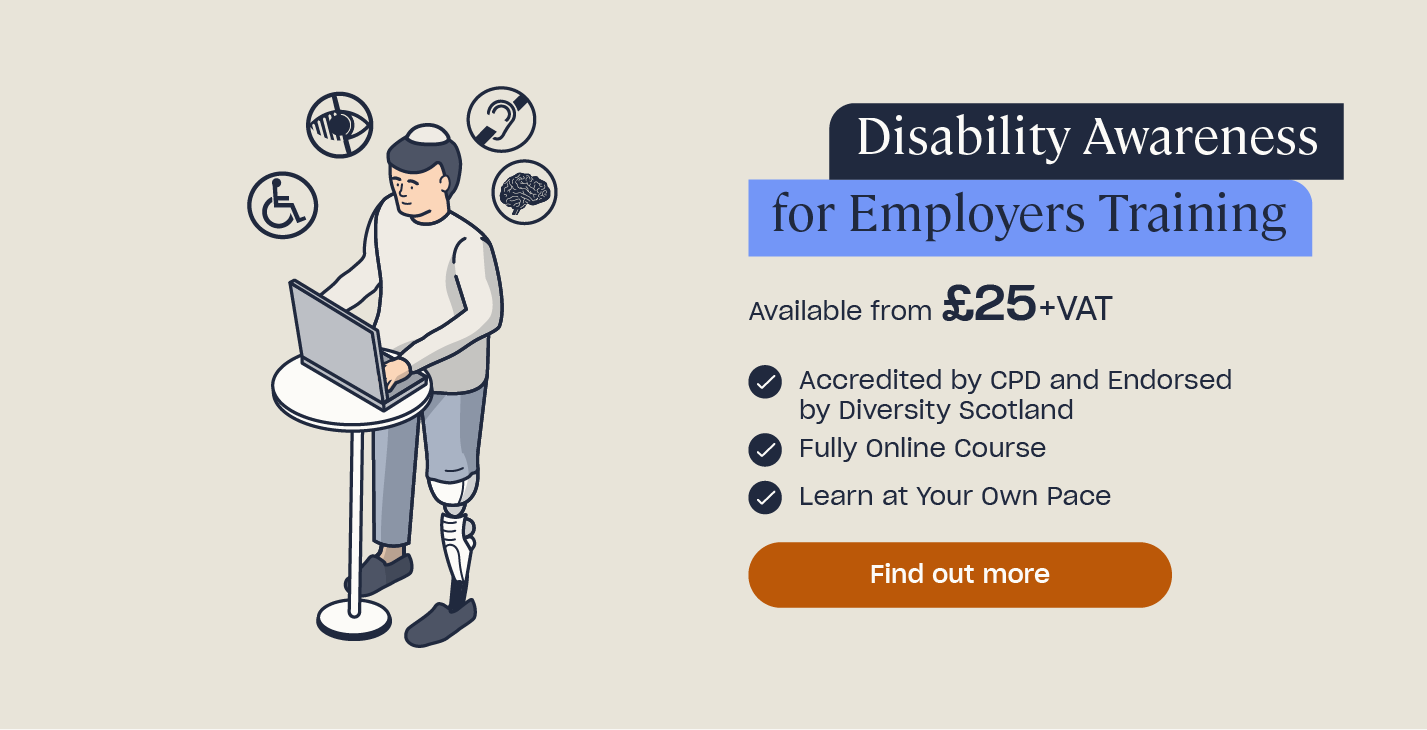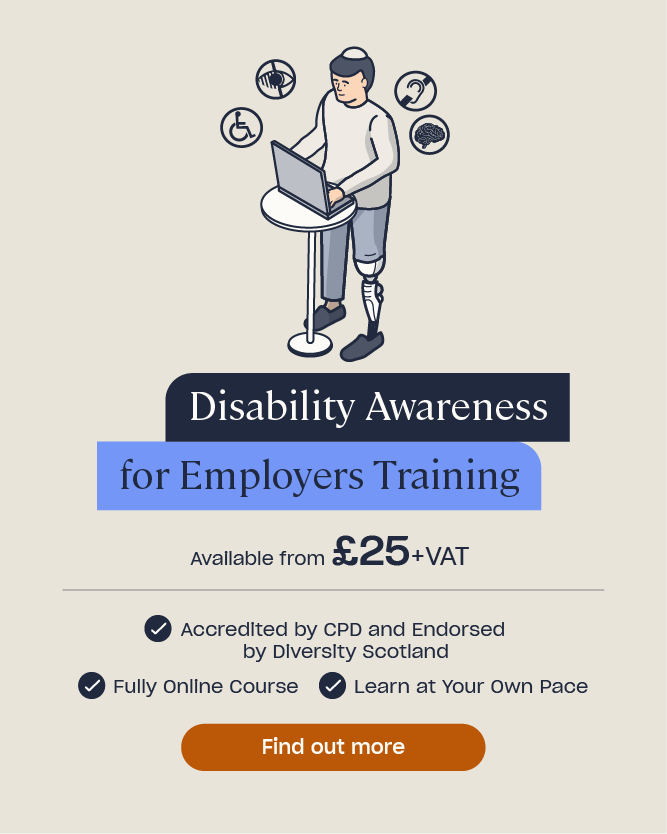How to Accommodate Ataxia in the Workplace
Ataxia is the term for a group of disorders that affect coordination, balance and speech. It has many different causes, types and associated symptoms and is a disability. It is important that people with ataxia are supported in the workplace, this means making reasonable adjustments where necessary.
In this article, we will explain what ataxia is and the different types and causes. We will also cover different prevention and treatment options, as well as providing guidance on supporting individuals with ataxia in the workplace.
What is Ataxia?
Ataxia can affect any part of the body and can cause difficulties with walking, talking, swallowing, vision and tasks that require control, such as writing.
Ataxia is a condition in itself. However, it is also a symptom of certain diseases, such as a stroke, a tumour or multiple sclerosis. It is very common for people to experience ataxia as a symptom of another illness or condition, but much less common for people to have ataxia as a condition.
Anyone can have ataxia, therefore it is important that everyone has an awareness of what it is. This is especially important for employers who may need to make adjustments in the workplace to ensure all employees with ataxia are fully supported.
Looking to learn more?
Our Disability Awareness Training course is suitable for employers wanting to learn about different types of disabilities, how they can impact people’s work and how to make a more inclusive workplace.
There are a number of different causes of ataxia. Some types of ataxia are inherited, such as spinocerebellar, others are due to brain damage or drug side effects.
Causes of Ataxia
Ataxia can develop over time or come on suddenly and there are many different causes. It usually results from damage to part of the brain called the cerebellum, which is located at the base of the brain and is connected to the brain stem. This part of the brain helps control balance, eye movements, swallowing and speech. Ataxia can also be caused by damage to other parts of the nervous system, such as the spine.
Causes of ataxia can be split into three categories, they are:
Acquired causes
These include:
- Long-term excessive alcohol intake.
- Medication side effects, such as sedatives and some antiepileptic drugs.
- Exposure to toxins, such as paint thinner or mercury.
- Vitamin deficiencies, particularly low vitamin E, B-1 and B-12.
- Thyroid problems.
- A stroke.
- Multiple sclerosis.
- Autoimmune diseases, such as celiac disease.
- Infections such as chickenpox, HIV or COVID-19.
- Brain abnormalities.
- Head trauma.
- Cerebral palsy.
- Degenerative brain conditions, such as Parkinson’s disease.
- Fatigue and stress.

Degenerative causes
This means causes or conditions that progressively get worse, or decline over time and often refers to loss of function. One example is multiple system atrophy, which is a rare condition that causes damage to the nerve cells in the brain and affects adults around the age of 50.
Hereditary causes
Some types of ataxia are hereditary, meaning they are passed down from biological parents. Certain genes cause different types of ataxia and you can inherit these genes from one or both parents.
The various causes that you can see above can lead to different types of ataxia depending on where the individual is affected, for example, their senses or balance.
What are the Different Types of Ataxia?
There are three main types of ataxia, they are:
Cerebellar
This happens because of a problem in the cerebellum, a part of your brain that manages how different parts of the brain work together.

Sensory
This disrupts your “self-positioning” sense, which lets your brain track where each body part is. For example, this is how you know where your hands and feet are, even if you can’t see them (such as with your eyes closed or in a dark room). Sensory ataxia disrupts this.
Vestibular
This involves a problem with your inner ears, which are needed to help you maintain your sense of balance. If your sense of balance is disrupted, it’s hard to coordinate how you move.
Other types of ataxia include:
- Episodic ataxia.
- Spinocerebellar.
- Ataxia – telangiectasia.
- Friedriech’s ataxia.
Symptoms of Ataxia
Ataxia can develop over time or come on suddenly and can cause many different symptoms. Any part of the body can be affected, but people with ataxia usually experience the following:
- Poor coordination.
- Unsteady walking.
- Poor balance.
- Difficulty with fine motor tasks such as eating, writing or fastening buttons.
- Changes in speech.
- Involuntary eye movements.
- Difficulty swallowing.
- Problems with vision.

The exact symptoms and their severity depends on the type of ataxia the person has. For example, people with Friedriech’s ataxia will commonly experience slurred, slow and unclear speech.
When it comes to treating ataxia, there are a couple of things you can do. One option is to treat the underlying cause. For example, those that have ataxia due to a vitamin deficiency can take supplements, or those with ataxia caused by infection can take medication, such as antibiotics.
However, if the ataxia is caused by brain damage, hereditary causes or degenerative causes, it is not possible to treat the underlying cause. Instead, there are ways to control the symptoms. Some ways of doing this can include:
- Speech and language therapy to help with slurred speech and swallowing.
- Occupational therapy for support with a loss of mobility, for example teaching you how to use a wheelchair.
- Physiotherapy can help with preventing your muscles from weakening or getting stuck in one position.
- Various medications to help with eye problems, bladder problems and nerve pain.

As well as treating ataxia, in some cases it can be prevented altogether. Preventative measures include:
- Drinking alcohol in moderation, or not at all.
- Wearing helmets and the necessary safety equipment to avoid concussions and traumatic brain injuries.
- Prioritising rest and managing stress levels to avoid fatigue-related ataxia.
- Treating infections as early as possible, such as ear infections, before they affect your nervous system.
- Maintaining a healthy weight and diet to reduce the risk of stroke or heart disease.
- Eating a healthy, balanced diet to ensure you’re getting all the necessary vitamins and nutrients.
How to Accommodate Ataxia in the Workplace
It can be hard to manage the symptoms of ataxia alongside the stress of a job. However, for some people, working is highly important for their mental and physical wellbeing. Consequently, it is important for people with ataxia to have access to fair employment and reasonable adjustments made where necessary.

There are certain considerations that should be made in the workplace to ensure people with ataxia are fully supported, they include:
- Considering the limitations facing the employee, such as struggling with writing.
- How do the limitations affect the employee and their job performance?
- Which specific tasks are affected?
- What adjustments can be made to help and support the employee?
- What resources are currently used to help the employee?
- How effective are the current adjustments and resources that are being used?
- Do employees need ataxia awareness training?
Symptoms of ataxia can make working in many environments difficult. However, it is important to remember that people with all types of disabilities share the same rights as other job-seekers and employees. It is therefore important that employers follow the rules which include all aspects of employment from recruitment to termination.
Looking to learn more?
Our Equality and Diversity Training explains the law in regards to preventing discrimination and harassment, and giving everyone the same opportunities whoever and wherever they might be.
Having a job has a multitude of social and psychological benefits and helps people to feel a sense of purpose. Therefore, it is crucial that people with ataxia are fully supported in the workplace.
Ataxia is the term for a group of disorders that affect coordination, balance and speech. It has many different causes, including genetics, brain trauma and vitamin deficiencies. There are also different types of ataxia, which affects the symptoms the person will experience. Employers should make reasonable adjustments in the workplace to ensure that all employees with ataxia are fully supported in their work.
Further Resources
- Equality and Diversity Training Course
- How to Support Hidden Disabilities in the Workplace
- Workplace Adjustments for People with Disabilities: Employer Responsibilities








